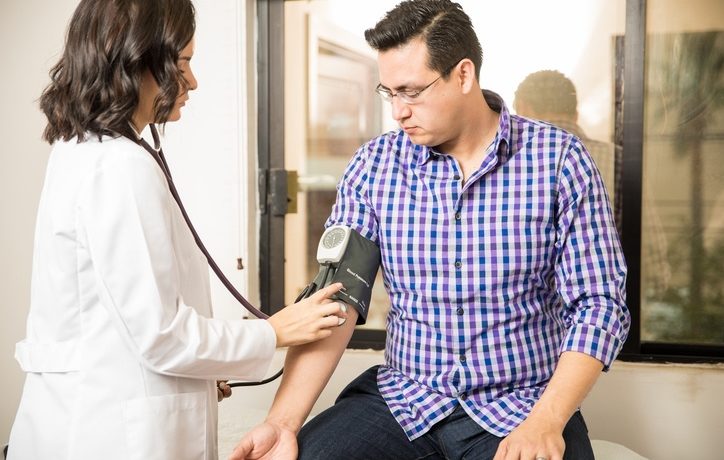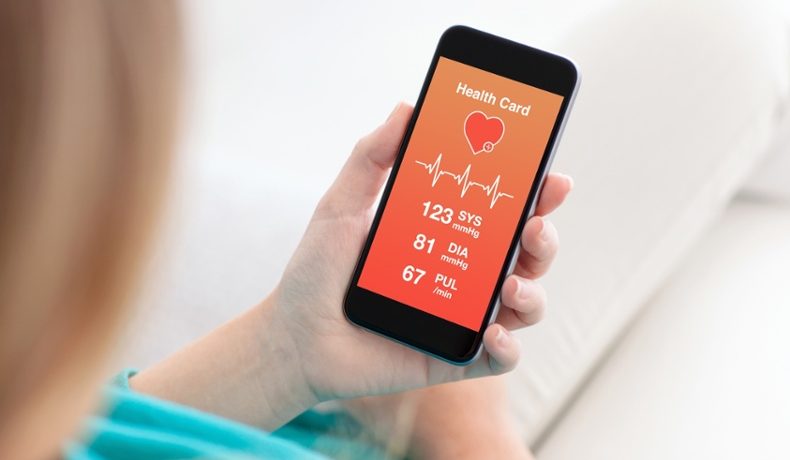physician patient relationship
10 Ways to Form a Lifelong Patient Care Partnership

Like any relationship, the patient care partnership is founded on communication. At base, as explained on Nursetogether.com, senders communicate messages to receivers, but clinicians are often under intense stress that weakens relationships. The following pointers can help overcome that stress and ensure high-quality care through strong partnerships.
1. Focus on Patients
As shown on the Health Affairs Blog, patient-centered care works to improve outcomes and satisfaction through strong patient care partnerships. Therefore, health care team members use clear and empathetic communication to provide support across various settings. In the process, they work to equip patients with the skills to prevent and manage illness on their own.
2. Center Relationships
Impersonal institutional culture can lead practitioners to ignore patient care partnerships. However, Goold and Lipkin noted that it is key to managing data, diagnoses, plans, and compliance. So, center relationships and increase patient comfort by getting to know them, their families, and their interests.
3. Set the Agenda
As Henbest and Stewart shows, centering patients orients healthcare around their specific concerns. In particular, practitioners should start by having patients list their issues and then collaborate on an agenda from most to least important. At that point, the two of you can create a plan of action together.
4. Listen Carefully
Reflective listening builds on the directed attention of active listening. Care providers specifically listen without interrupting and then reflect patients’ concerns back to them. Allowing people to tell their story will help you obtain information and, as shown by Clark et al. improve outcomes, behavior, and patient satisfaction.
5. Be Mindful
Communication’s increasing complexity can put heavy demands on providers’ attention, making it difficult to be conscientious in one’s work. On the other hand, mindfulness – or being fully present in one’s practice – can prevent errors and relieve stress for patients and practitioners, as Hutchinson and Dobkin demonstrate in their research.
6. Manage Emotions
Managing emotions is one of the most valuable communication skills when dealing with the difficult situations of modern healthcare. Kim et al. highlight empathy’s role in boosting trust, compliance, and satisfaction. Team members should thus identify, acknowledge, and respectfully address emotions.
7. Educate
For help in decision-making, patients require an understanding of treatments, consequences, and steps in healing. You should provide websites, reading materials, videos, and other resources to help patients learn more. As shown on the Health Affairs Blog, education generally reduces re-admission while raising moral support and mental stability.
8. Increase Access
Information technology provides one way to minimize wait times and otherwise boost health care efficiency. For instance, electronic health records give patients greater access to their health goals, needs, values, and preferences. As noted on Medscape, such technology challenges the physician’s traditional role and nurtures the patient care partnership.
9. Improve Facilities
Greene et al noted that medical facilities should be improved. From medical jargon used in signs to nurses’ stations that are situated oddly far from patients, these buildings are fundamentally designed around clinicians’ needs alone. Centering such spaces around patients can help create more empathetic environments that help patients feel involved in their health care.
10. Get Feedback
Providing and receiving feedback are reassuring activities, as shown in a study from Perspectives on Medical Education. Many clinicians survey patients and use the results to improve their communication and behavior. Such surveys also help patients trust their providers and feel more involved in their health.
With consistent practice, these tips can strengthen a patient care partnership – and improve care quality, safety, and efficiency. In the process, both sides of this partnership will better endure – and to improve the conditions of modern medicine.
—
Did you like reading this article? Subscribe!
![]()
3 Little Known Physician Patient Communication Tactics

Good communication with your patients requires that you both recognize their expertise in their own health and respond to them with empathy. Patient-centered care like this may not always be easy, as shown by Marvel et al.’s finding that 90 percent of complaints about physicians relate to their communication style. Yet, the important yet lesser-known physician patient tactics of slowing down, appreciating patient world view, and having patients summarize discussion lead to significant improvements in clinical outcomes and overall patient satisfaction.
1. Slow Down
Marvel et al.’s research also revealed that physicians who communicate at a slow and deliberate pace are better understood by patients, especially when it comes to new information. Yet, on average, medical professionals only wait around 20 seconds before interrupting an individual’s initial description of their problems. To prevent missing information, you should use the following physician patient communication tactics:
- Pause frequently to allow listeners to form questions,
- Replace long monologues with short, customized explanations,
- Reinforce silences with open body language,
- And use questions and dialogue to check patient understanding.
In the process, be sure to tailor provided information to each patient, as, for instance, 20 to 40 percent of individuals 60 to 80 years old surveyed by the US Census never finished high school. The information that you gain will help you learn more about each person, adapt information to their needs, and improve their comprehension, all while minimizing emotional distress.
2. Engage with Beliefs
Physicians rely upon a biomedical perspective, but patients use cultural beliefs and personal values for decision-making. As a result, Ha and Longnecker note that providers confront distrust, competing therapies, or even lack of agreement to treatment. However, the best solution is to develop their cultural competency. In particular, the following physician patient communication tactics ensure collaboration, especially when dealing with cultural or language-based divides.
- Describe a problem medically and ask the patient to summarize it in order to reveal their bias,
- Recognize and respect patient world views, including values, beliefs, and expectations,
- Assess language fluency and world view to help adapt your communication methods,
- Be aware of your own cultural and personal biases and beliefs,
- Lastly, customize care to align with patients’ standards.
From there, you can identify and resolve potential barriers to communication and treatment alike. As Platt and Keating have shown in research on urinary tract infections, such an approach will improve adherence to the care plan, even as it reduces recurrence over time.
3. Close the Loop
Research from the American Academy of Family Physicians shows that half of all patients leave their doctor’s office having misunderstood something. In large part, this is due to the limited amount of time allotted for communication. Although this problem is unavoidable, a technique called “closing the loop” can help prevent it. In particular, this method involves the following:
- Start a dialogue about each of your top priorities,
- Then, alternate asking and telling to assess their knowledge,
- Evaluate how prepared they are for their stated goals,
- Next, set realistic, manageable, and measurable goals,
- Last, close the loop by having them repeat what was discussed.
These physician patient communication tactics make it possible to quickly and carefully communicate with patients by setting a clear agenda. Furthermore, closing the loop by having them verbalize their understanding gives you the chance to correct misunderstandings.
The above physician patient communication tactics may be less well-known than some like active listening. Yet, they are just as powerful in ensuring the clarity of your explanations of problems and related treatments. Furthermore, avoiding misunderstandings ensures a high quality of care, which will, in turn, raise patient quality of life.
—
Would you like to read more blogs like this one? Subscribe!
![]()
Why Patients Value Their Primary Care Physician

There are few personal relationships more influential on a person’s quality of life than the one they have with their primary care physician. The average individual may not necessarily view it in those terms, but it’s true. People place their most important “possession” – their health – in the hands of their doctor, thereby assigning tremendous value to that health care professional. But why? Upon what factors is such value based?
There are any number of reasons someone would value their primary care physician. Trust is, of course, the fundamental component of any successful relationship. But trust is not organic, it doesn’t just magically appear when people interact. There are reasons that people trust one another and reasons they don’t. Some seem quite reasonable or at least relevant. Take, for example, one of the most common: My doctor doesn’t listen. Others, not so much: My doctor makes too much money.
So how does a primary care physician build the level of trust necessary to nurture a long-term, mutually beneficial relationship? The following are among the factors that seem most crucial to establishing the requisite level of trust:
1. Remember that your priorities often differ from those of your patients.
While the health of your patient is one priority you share, there are others you don’t. Primary among these, perhaps, is your focus on running a successful medical practice. Not that there’s anything wrong with that, of course. But, if your patients sense that they are simply revenue producers instead of individuals you care about personally, trust becomes difficult to maintain. As passe as it sounds, no one wants to be treated as if they’re simply a number.
2. It’s a personal professional relationship.
In an informal survey conducted via Twitter by Ashish K Jha, physician and health policy researcher, he got the following results:

The top 3 responses – Empathetic, good listener, compassionate/caring/kind – all relate to communication. Not surprisingly, the ability of a primary care physician to effectively communicate with his or her patient is considered a crucial factor in determining what makes a good doctor. Subjective? Of course. But, understandable nonetheless.
3. Competence.
What constitutes competence? Is it simply the technical ability of a physician or are there other components as well? Probably the latter. For example, you may be the most skilled primary care physician in your city when it comes to providing health care, but if you are often preoccupied, constantly late, spend very little time speaking with your patients or have a sour personality, you may not be considered very competent by your patients. Perception is reality and that’s especially true when it comes to how your patients view you. If you conduct your practice in an unprofessional, undisciplined and/or disorganized manner, it’s likely you will not be perceived as very competent.
There are, of course, other factors that effect whether someone values their doctor. However, all of them involve whether the patient feels that they can trust you. There’s an old saying along the lines of “familiarity breeds contempt.” When it comes to patients and their primary care physician, however, it’s much more likely that familiarity breeds confidence, cooperation and comfort. And isn’t that just what the doctor ordered?
—
Are you a primary care physician who wants to work for a community hospital? Apply to work for Elliot Health System!
![]()
The Relationship Between Mobile Healthcare Apps and Physician Visits

The internet has changed everything. It wasn’t that long ago when patients relied exclusively on physicians for healthcare advice, diagnosis and treatment. Today, however, an increasing and alarming number of people are turning to mobile healthcare apps for healthcare expertise.
And it could be dangerous.
According to the fourth annual study on mHealth app publishing conducted by Research2Guidance, there are currently more than 100,000 healthcare apps available to both Apple and Android users. According to the study’s authors, it’s estimated that 1.5 billion people around the world will have downloaded a healthcare app by 2018.
Many of those who use mobile healthcare apps cite convenience as their top reason for turning to their smartphones for healthcare information. They like having access to their medical records, the ability to make appointments with the swipe of a finger and the plethora of information about medication, symptoms and preferred treatments. Others use mobile healthcare apps to track their diets, exercise habits and sleep. Most people consider mobile healthcare apps to be incredibly useful.
Physicians, however, should be wary of the way their patients use the apps.
One study published in 2013 found that the average American spent about an hour online each week searching for healthcare information. While many search for general information about allergies and treating the common cold, others seek information related much more serious conditions—and then accepted what they found online as undisputed healthcare truth.
The result, according to research conducted by the Pew Research Center, is that only about half of all the people who looked for and found healthcare information online actually followed up with their physicians.
This trend puts both patients and physicians in precarious positions.
While people are increasingly using and trusting mobile healthcare apps, their faith in physicians is in a downward spiral. A recent study found that only about 23 percent of Americans have “a great deal” of confidence in the country’s healthcare system, and a disappointing 58 percent say that doctors can be trusted.
The challenge for physicians is to embrace the fact that mobile healthcare apps are not going away and find a way to help their patients understand how to use them effectively, without doing harm. In other words, physicians need to leverage the power of the internet to engage patients in their care and treatment plans. Here’s how:
Educate
As with any app, there are those mobile healthcare apps that are reliable and there are those that should not be trusted. For this reason, it is important that physicians familiarize themselves with apps that are both useful and accurate—and then share those apps with patients.
At the very least, physicians will know from which sources their patients are getting their information, which is the first step towards ensuring that patients are not taking bad advice.
Engage
Patients are increasingly being asked and expected to take more responsibility for their health and care. Hence, they many turn to apps for information.
Physicians can leverage this trend by encouraging patients to share information about their use of mobile healthcare apps during office visits. Engaging patients in honest, authentic conversations about online information—whether treatment options or ways to deal with symptoms—can actually lead to more accurate diagnoses and care that is more personalized.
Embrace
Many apps can actually make physicians’ lives easier. They assist with the scheduling of office visits, provide patients with access to their medical records and allow patients to ask questions.
Physicians should identify the apps that make the most sense to their practices and embrace them. Patients are using apps anyway, so physicians should use them to their advantage, too.
—
Did you like this article? If you’d like to read others like it, subscribe to our blog!
![]()
5 Ways Physicians Can Improve Family and Patient Engagement

Physicians and patients alike face increasing pressures with regard to care. Doctors can be pessimistic about their field due to rising demands and over 40% of patients take on health risks due to unclear communication. The main problem is a focus on single encounters between patients and clinicians which contributes to over-spending in healthcare without clear benefits. Patient engagement in healthcare helps by focusing on collaboration among patients, family, clinicians, and staff. In particular, it combines consumer, healthcare, and patient and family engagement through the integration of each across all levels and settings of care. Through the following tips, a patient can take center stage as a full participant in their health, leading to better outcomes and lower costs.
Put Knowledge in Patients’ Hands
Sharing information is the most basic and most important step, and it starts by providing all details needed to make healthcare decisions. Explain the diagnosis using transparent language and specific data, share educational materials, and discuss potential next steps or treatment options. Keeping patients in the loop will help them feel empowered, resulting in better adherence to recommendations and higher rates of behavior change in areas like exercise and diet.
Engage Family in Care
Another key step in patient engagement in healthcare is welcoming family members as active participants in care. In fact, their questions and concerns will help you and your patient ensure productive and meaningful visits. They can also act as advisors or collaborative partners in developing and revising the plan for care. A level of nurturing family involvement will support patient well-being and provide a resource for ample input and feedback.
Listen as a Form of Support
Given that the average generalist conducts around 150,000 interviews over their career, communication is central to engagement. So, begin each visit by inquiring about patient and family needs; then, use open-ended questions and listening behavior like eye contact and body language to engage with patients and family members. During discussions, enable patient memory and clarity by talking at their level, summarizing talking points, clarifying statements, and inviting questions and dialogue. The results speak for themselves, as comprehension and satisfaction increase among patients when doctors lean forward and directly face them.
Target Communication and Care
Marketing is a less obvious step for patient engagement in healthcare, but targeting current and potential customers is essential to establishing trust. In particular, physicians can ensure satisfaction through ongoing content like blogs or newsletters with accurate and timely communication through multiple channels including follow-up and reminder e-mails. A web portal also ensures convenient tracking of visits, treatment, billing, and correspondence with the potential for open records and scheduling, which 82% of patients prefer.
Personalize Medical Care
Another approach is personalized medicine, which frames physicians and patients as partners in care. Although it limits the number of patients and relies on annual dues, this model ensures financial stability for clinicians and easier access to care for patients. In particular, collaboration among clinicians enables greater coordination of care and resulting conveniences for patients like same-day appointments. With better results and patient accountability, personalized medicine has satisfaction rates of 94% among patients and 95% among doctors.
With these tips in mind, patient engagement starts by considering the current state of your practice and how to move forward. Fundamentally, improving the relationship between physicians and patients results in better adherence to care and long-term higher quality of life, with decreased hospital visits, morbidity, and mortality. Ensuring that patients and their families are full participants in healthcare is definitely a powerful shift in the right direction.
—
Did you enjoy this article? If you subscribe to our blog, we can share more content with you.
![]()
6 Ways to Improve Your Physician Patient Relationship

A solid physician patient relationship is built on a foundation of trust and understanding. For patients, it’s about being able to trust that the physician has their best interests at heart; that their time and concerns will be accorded the proper respect. For you, as a physician, it’s about being able to understand what the patient needs, even when it conflicts with what they may want. It’s a delicate balancing act between keeping patients healthy, and keeping them happy with the services you provide. Here are six strategies for improving each physician patient relationship you build.
Get the Staff Involved
There are no unimportant roles when it comes to building trust with patients. With this in mind, make a plan that includes your entire staff in patient care, including:
- Clearly defined staff roles – Each staff member should know how you expect them to contribute to patient care.
- Daily morning meetings – Go over the day’s schedule and identify patients who may need extra care, times of high patient volume that may increase wait times, and opportunities to build stronger relationships with patients.
- Improved patient pre-screening – Appointment scheduling offers staff an opportunity to evaluate patients before they come into the office. Patients should be asked basic questions like “What’s the reason for your visit today?” and “Do you have any specific requests for the physician?”
- Lower patient wait times – Patients made to wait overlong for their appointment may feel as though their time and concerns are not being given the proper respect. Encourage staff to monitor waiting times; provide regular updates to those waiting, especially if there’s a delay.
Develop Effective Staff Communication
Communicating effectively with staff is an important part of meeting the needs of your patients. Keep a close eye on patient interactions that have proven difficult in the past. Give your staff better tools to deal with problems, whether it’s a script for difficult patients, additional training in personal interactions, or other techniques developed specifically for your staff.
Develop Patient Feedback Techniques
An excellent way to gauge patient satisfaction is to give them options for feedback. Email or mail-in surveys, patient satisfaction questionnaires, and other feedback tools can help you improve your patient interactions, while also reassuring patients that their needs and comfort are important to you.
Understand Patient Concerns
Each patient will have different concerns, even those who have the same diagnosis. Take some time at each visit to make sure you understand the patient’s concerns, and use your staff to gather relevant information whenever patient interactions take place.
Cultivate Your Patient Care Style
Every doctor has their own style of patient care; it’s important to find and cultivate yours. Patients respond better to physicians who feel comfortable in their role as a caregiver. Warmth is as important as professionalism in patient satisfaction; finding the balance that best fits you is an important part of building a stronger physician patient relationship.
Be Welcoming
Offer patients a welcoming, warm environment to foster better physician patient relationships. Bright colors and patient perks like WiFi can change a patient’s entire outlook about your practice. Don’t be afraid to make them feel comfortable while they wait.
Building a Better Physician Patient Relationship
While implementing some of these strategies will help you build more trust with your patients, putting all six into place will create a space where patients feel well cared for and respected. These strategies will not only help build stronger relationships with your patients, they’ll also ensure your staff knows what you expect and help your practice run more smoothly.
—
Elliot Health System believes in building strong physician patient relationships. If you’d like to join a health system that is committed to building and maintaining that bond, consider a career with us.
![]()
What Physicians Want Their Patients to Know

Just three years ago, nurses, pharmacists and medical doctors topped the list of the most trusted professionals in the country, according to a survey conducted by Gallup.
Today, after sweeping healthcare reform has been enacted, office visits have become shorter and less personal, and people are being asked to take more responsibility for their health, trust is eroding.
It seems the problem may be related to communication.
Americans who once enjoyed low co-pays and bedside exams are now feeling more like metrics to be measured against the bottom line. They don’t understand why this is happening, but it’s clear who they blame: physicians.
Physicians, too, have experienced the changes–and they’re not always happy with them, either. Sadly, they rarely share their feelings with patients.
So maybe it’s time to clear the air and allow doctors to clear up some misconceptions. Here is a look at what physicians want their patients to know (but haven’t had the chance to tell them):
Physicians Want More Time with Patients
It is a fact of life that time is money. That’s why exams have gotten shorter. Due to declining reimbursements, physicians are forced to see more patients and perform more procedures.
Most doctors don’t like the shorter exams any more than their patients. In fact, many feel like they could significantly improve outcomes if insurance companies would simply pay for longer exams.
Continuity Matters
When it comes to what physicians want their patients to know, continuity often tops the list.
Some people take better care of their vehicles than they do themselves. Seeing your doctor on a regular basis is at least as important as getting an oil change every 3,000 miles.
Physicians can only help their patients enjoy the best possible health if they have a long-term relationship with one another. Research has shown that patients who rarely see their doctors or switch doctors frequently experience significantly more health problems than those who have regular visits with one general practitioner.
Your Opinion Matters
There seems to be a feeling among patients that their doctors know everything. The truth is, doctors need patients to play an active role in their health.
Physicians find it incredibly helpful when their patients ask questions, share information honestly and even disagree. At the end of the day, patients and physicians need to work together to achieve the best possible outcomes–and that can only happen if patients are actively engaged in the process.
Take Your Medicine
It seems like it should go without saying, but it is a commonly noted when the topic of what physicians want their patients to know comes up: Patients need to take their medicine.
Doctors prescribe medicine for specific reasons. If patients don’t take their medicines as prescribed, it significantly diminishes the likelihood of a condition improving.
It also complicates your physician’s job, because she or he will not know whether or not the medication was effective. This not only increases patient discomfort, but it unnecessarily increases the cost of care.
Don’t Rely on the Internet
The proliferation of websites devoted to providing information about health problems has led to people self-diagnosing. This can be problematic for physicians because it ultimately leads to people starting treatments recommended online. Often, these treatments are ineffective and can actually cause the real problem to go untreated, get worse or cause other health issues.
What Physicians Want Their Patients to Know
Patients need to trust their doctors, and doctors need to trust their patients. Maybe if everyone starts communicating openly, honestly and regularly, doctors can once again top the list of the most trusted professionals in the country.
—
Elliot Health System is proud of our trustworthy physicians. Would you like to join us?
![]()










Recent Comments